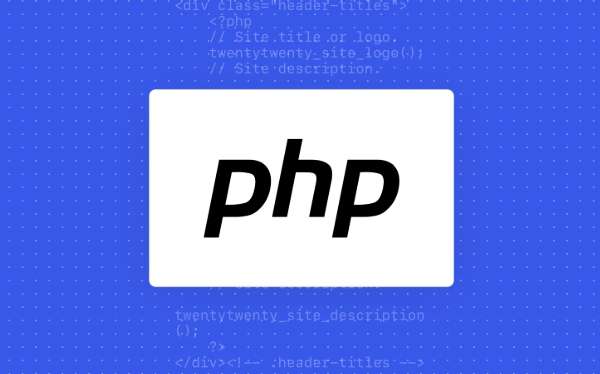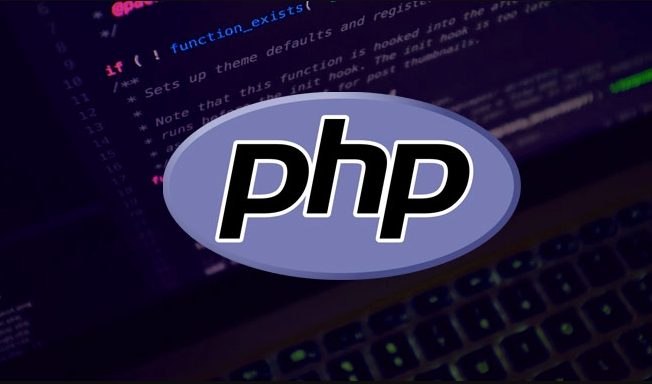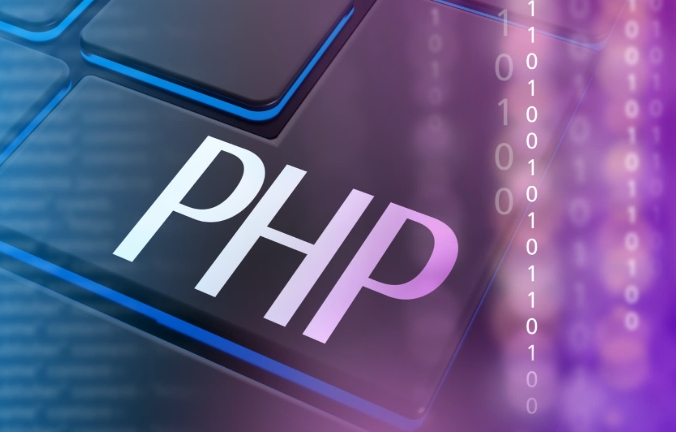To run a PHP script, you need to select the appropriate environment according to the purpose. 1. Local operation: Use integrated packages such as XAMPP, WAMP or MAMP to build an environment, put the PHP file into the http://localhost/yourfile.php through the browser to execute; Linux users can check and install PHP with sudo apt. 2. Command line running: Applicable to automation tasks, ensure that after PHP is added to PATH, enter the script directory in the terminal and execute php script.php. 3. Online testing: Quickly test code snippets through platforms such as 3v4l.org, phptester.net, etc., which are suitable for learning and sharing, but not for developing complete applications. The correct choice of method can make PHP running simple and efficient.

PHP scripts aren't like HTML files — you can't just double-click and run them. They need a special environment to work properly. If you're trying to execute PHP code on your own machine or a server, here's how to get it done the right way.

Setting up a local PHP environment
Before running any PHP script, you need a working environment that includes PHP itself, and optionally a web server like Apache or Nginx. The easiest way for beginners is using a package like XAMPP, WAMP (for Windows), or MAMP (for macOS).

- XAMPP is cross-platform and comes with everything pre-configured
- Just install, start the Apache server, and drop your
.phpfile into thehtdocsfolder - Then visit
http://localhost/yourfile.phpin your browser
If you're on Linux, you might already have PHP installed. You can check by opening a terminal and typing:
php -v
If not, use your package manager to install it (eg, sudo apt install php on Ubuntu-based systems).

Running PHP from the command line
You don't always need a browser to run PHP. If you're writing a script means for tasks like cron jobs or data processing, you can execute it directly in the terminal or command prompt.
Make sure PHP is available globally. On most systems, this means adding it to your PATH during installation or later. Once set up:
- Save your PHP script as something like
script.php - Open a terminal or CMD and navigate to the folder containing the file
- Run:
php script.php
This method skips the web server entirely and outputs results straight to the console. It's fast and useful for automation.
Using an online PHP runner (for quick tests)
Sometimes you just want to test a small piece of code without setting up anything locally. Online tools like 3v4l.org, phptester.net, or JDoodle let you paste and run PHP snippets instantly.
These are great for:
- Learning basic syntax
- Testing compatibility across different PHP versions
- Sharing quick examples with others
But they're not suitable for full apps or sensitive data. Also, no file system or database access, so real development still needs a proper setup.
Running PHP scripts isn't complicated once you know what environment you need. Whether you're building a website, automating tasks, or just learning, there's a method that fits. Mostly, it just takes a bit of setup and knowing which tool to use when.
The above is the detailed content of How to run PHP scripts?. For more information, please follow other related articles on the PHP Chinese website!

Hot AI Tools

Undress AI Tool
Undress images for free

Undresser.AI Undress
AI-powered app for creating realistic nude photos

AI Clothes Remover
Online AI tool for removing clothes from photos.

Clothoff.io
AI clothes remover

Video Face Swap
Swap faces in any video effortlessly with our completely free AI face swap tool!

Hot Article

Hot Tools

Notepad++7.3.1
Easy-to-use and free code editor

SublimeText3 Chinese version
Chinese version, very easy to use

Zend Studio 13.0.1
Powerful PHP integrated development environment

Dreamweaver CS6
Visual web development tools

SublimeText3 Mac version
God-level code editing software (SublimeText3)
 PHP Variable Scope Explained
Jul 17, 2025 am 04:16 AM
PHP Variable Scope Explained
Jul 17, 2025 am 04:16 AM
Common problems and solutions for PHP variable scope include: 1. The global variable cannot be accessed within the function, and it needs to be passed in using the global keyword or parameter; 2. The static variable is declared with static, and it is only initialized once and the value is maintained between multiple calls; 3. Hyperglobal variables such as $_GET and $_POST can be used directly in any scope, but you need to pay attention to safe filtering; 4. Anonymous functions need to introduce parent scope variables through the use keyword, and when modifying external variables, you need to pass a reference. Mastering these rules can help avoid errors and improve code stability.
 How to handle File Uploads securely in PHP?
Jul 08, 2025 am 02:37 AM
How to handle File Uploads securely in PHP?
Jul 08, 2025 am 02:37 AM
To safely handle PHP file uploads, you need to verify the source and type, control the file name and path, set server restrictions, and process media files twice. 1. Verify the upload source to prevent CSRF through token and detect the real MIME type through finfo_file using whitelist control; 2. Rename the file to a random string and determine the extension to store it in a non-Web directory according to the detection type; 3. PHP configuration limits the upload size and temporary directory Nginx/Apache prohibits access to the upload directory; 4. The GD library resaves the pictures to clear potential malicious data.
 Commenting Out Code in PHP
Jul 18, 2025 am 04:57 AM
Commenting Out Code in PHP
Jul 18, 2025 am 04:57 AM
There are three common methods for PHP comment code: 1. Use // or # to block one line of code, and it is recommended to use //; 2. Use /.../ to wrap code blocks with multiple lines, which cannot be nested but can be crossed; 3. Combination skills comments such as using /if(){}/ to control logic blocks, or to improve efficiency with editor shortcut keys, you should pay attention to closing symbols and avoid nesting when using them.
 How Do Generators Work in PHP?
Jul 11, 2025 am 03:12 AM
How Do Generators Work in PHP?
Jul 11, 2025 am 03:12 AM
AgeneratorinPHPisamemory-efficientwaytoiterateoverlargedatasetsbyyieldingvaluesoneatatimeinsteadofreturningthemallatonce.1.Generatorsusetheyieldkeywordtoproducevaluesondemand,reducingmemoryusage.2.Theyareusefulforhandlingbigloops,readinglargefiles,or
 Tips for Writing PHP Comments
Jul 18, 2025 am 04:51 AM
Tips for Writing PHP Comments
Jul 18, 2025 am 04:51 AM
The key to writing PHP comments is to clarify the purpose and specifications. Comments should explain "why" rather than "what was done", avoiding redundancy or too simplicity. 1. Use a unified format, such as docblock (/*/) for class and method descriptions to improve readability and tool compatibility; 2. Emphasize the reasons behind the logic, such as why JS jumps need to be output manually; 3. Add an overview description before complex code, describe the process in steps, and help understand the overall idea; 4. Use TODO and FIXME rationally to mark to-do items and problems to facilitate subsequent tracking and collaboration. Good annotations can reduce communication costs and improve code maintenance efficiency.
 Quick PHP Installation Tutorial
Jul 18, 2025 am 04:52 AM
Quick PHP Installation Tutorial
Jul 18, 2025 am 04:52 AM
ToinstallPHPquickly,useXAMPPonWindowsorHomebrewonmacOS.1.OnWindows,downloadandinstallXAMPP,selectcomponents,startApache,andplacefilesinhtdocs.2.Alternatively,manuallyinstallPHPfromphp.netandsetupaserverlikeApache.3.OnmacOS,installHomebrew,thenrun'bre
 How to access a character in a string by index in PHP
Jul 12, 2025 am 03:15 AM
How to access a character in a string by index in PHP
Jul 12, 2025 am 03:15 AM
In PHP, you can use square brackets or curly braces to obtain string specific index characters, but square brackets are recommended; the index starts from 0, and the access outside the range returns a null value and cannot be assigned a value; mb_substr is required to handle multi-byte characters. For example: $str="hello";echo$str[0]; output h; and Chinese characters such as mb_substr($str,1,1) need to obtain the correct result; in actual applications, the length of the string should be checked before looping, dynamic strings need to be verified for validity, and multilingual projects recommend using multi-byte security functions uniformly.
 Learning PHP: A Beginner's Guide
Jul 18, 2025 am 04:54 AM
Learning PHP: A Beginner's Guide
Jul 18, 2025 am 04:54 AM
TolearnPHPeffectively,startbysettingupalocalserverenvironmentusingtoolslikeXAMPPandacodeeditorlikeVSCode.1)InstallXAMPPforApache,MySQL,andPHP.2)Useacodeeditorforsyntaxsupport.3)TestyoursetupwithasimplePHPfile.Next,learnPHPbasicsincludingvariables,ech






